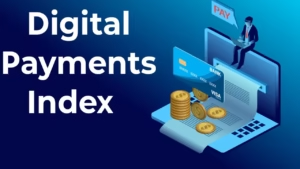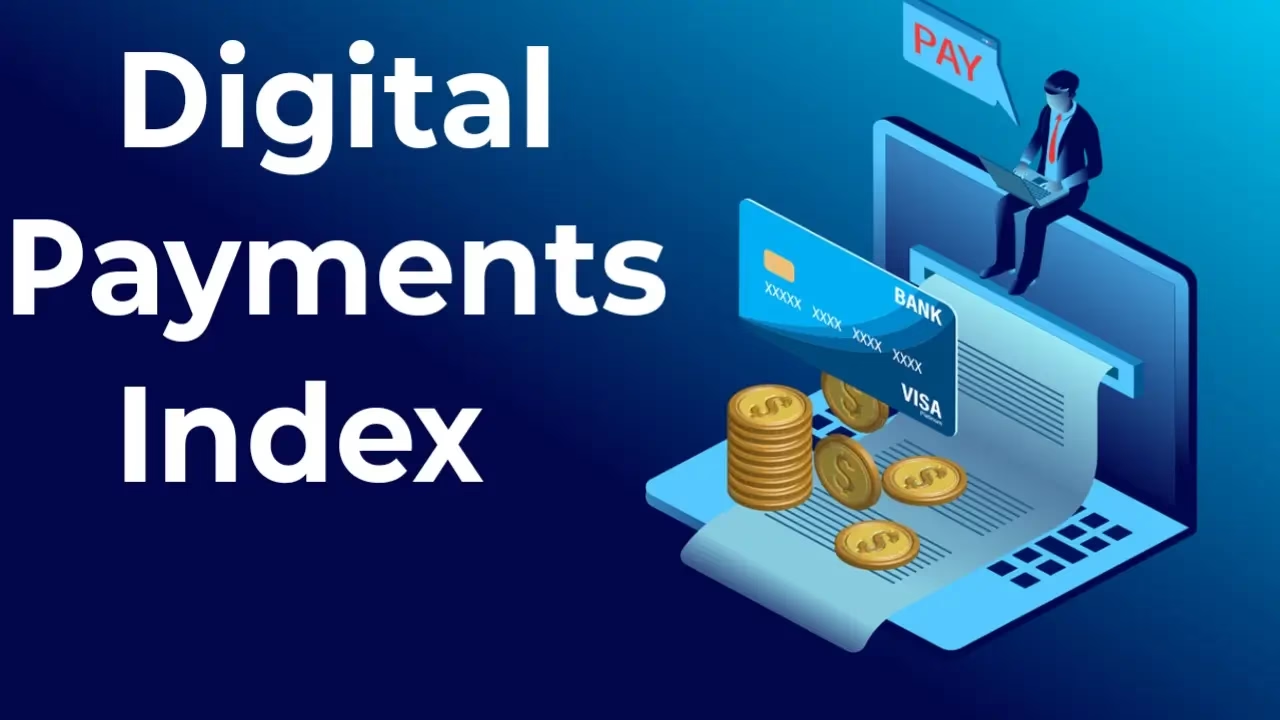Digital Payments Index: Transforming India’s Economy
Explore the digital payments index and its impact on India’s economy. Learn about trends, benefits, challenges, and future opportunities in digital payments with expert insights and real-world data.
Digital Payments Index: Transforming India’s Economy
Imagine a world where every financial transaction is seamless, secure, and instantaneous—whether you’re paying your bills, shopping online, or transferring money to a friend.
This vision is becoming a reality with the digital payments index, a key indicator of how digital transactions are reshaping the economy.
In India, non-tech professionals, business owners, and students alike are asking: How can understanding the digital payments index help solve everyday financial challenges and drive economic growth? In this guide, we break down the digital payments index in simple human English.
We’ll explain what it is, why it matters, and how you can leverage this knowledge to make smarter financial decisions and improve business strategies.
1. Introduction to the Digital Payments Index
The digital payments index is a measure that tracks the adoption, usage, and growth of digital payment systems in a given economy. It reflects trends in online transactions, mobile payments, and other cashless systems.
Many individuals in India face challenges like long transaction times, security issues, and limited access to banking facilities. The digital payments index provides insights into these challenges and offers a glimpse into the future of financial transactions.
With India rapidly moving toward a cashless society, understanding this index is crucial for anyone looking to navigate modern financial landscapes, whether for personal use or business growth.
2. The Rise of Digital Payments in India
2.1 Historical Context and Evolution
India’s journey toward digital payments began with initiatives like the Unified Payments Interface (UPI) and the launch of mobile wallets. Over the past decade, the country has witnessed a dramatic increase in cashless transactions.
- Key Milestones:
- The introduction of UPI in 2016 revolutionized peer-to-peer payments.
- Government initiatives such as Digital India have further accelerated this transformation.
2.2 Current Trends
Recent data from sources like Statista show that digital payments in India have grown exponentially, with billions of transactions processed every month.
- Statistics:
- A 2022 report indicated that India’s digital payments market reached a valuation of over USD 350 billion.
- Mobile payment usage has surged by over 40% year-over-year.
2.3 Why It Matters
The digital payments index is more than just a number—it reflects economic inclusion, increased transparency, and overall financial growth. For students and business professionals, understanding these trends can lead to smarter investment decisions and enhanced operational strategies.
3. Components of the Digital Payments Index
3.1 Payment Volume and Frequency

One of the core components of the digital payments index is the total volume of transactions and how frequently they occur. This metric helps determine consumer trust and the overall penetration of digital payment systems.
- Example:
A high transaction frequency indicates that consumers are increasingly comfortable with digital payments.
3.2 Transaction Value
This measures the total monetary value of all digital transactions. It provides insight into how significant digital payments are in the economy relative to traditional cash transactions.
3.3 User Penetration and Adoption Rates
User adoption rates show how many people are using digital payment methods. High adoption indicates successful implementation and widespread trust in these systems.
3.4 Security and Reliability Metrics
Security is critical in digital payments. Metrics related to fraud rates, successful transaction completions, and system downtimes are essential components of the digital payments index.
For more detailed information on these components, visit Reserve Bank of India for regulatory insights and industry reports.
4. Benefits of a Strong Digital Payments Ecosystem
4.1 Economic Growth
Digital payments drive economic growth by reducing transaction costs and increasing the velocity of money in the economy. They create a more efficient, transparent, and inclusive financial system.
4.2 Financial Inclusion
One of the greatest benefits is the inclusion of unbanked and underbanked populations. With digital payment solutions, more people have access to formal financial services, leading to improved quality of life.
4.3 Enhanced Security and Transparency
Digital transactions reduce the risks associated with carrying cash and provide a clear audit trail. This leads to better accountability and less corruption in financial dealings.
4.4 Convenience and Efficiency
With features like instant transfers, bill payments, and online purchases, digital payments make everyday transactions faster and more convenient.
A table below summarizes these benefits:
Table source: Adapted from research reports by the World Bank.
5. Challenges Facing Digital Payments in India
Despite the rapid growth, several challenges remain:
5.1 Infrastructure Issues
While urban areas may have robust digital networks, rural regions still face connectivity issues that hinder the adoption of digital payments.
5.2 Cybersecurity Concerns
As digital payments increase, so do the risks of fraud and cyberattacks. Ensuring data protection and user privacy is paramount.
5.3 Digital Literacy
A significant portion of the population still lacks the digital literacy needed to confidently use digital payment platforms. Education and user-friendly interfaces are key.
5.4 Regulatory and Policy Challenges
Balancing innovation with consumer protection remains a challenge. Government policies and regulations must keep pace with technological advancements.
For additional insights into these challenges, review articles on cybersecurity from Kaspersky for detailed analyses and tips.
6. How the Digital Payments Index Impacts Business Strategy
6.1 Market Insights for Businesses
Businesses use the digital payments index to gauge market trends and consumer behavior. This data helps companies tailor their services and products to meet customer demands.
6.2 Investment Decisions
Investors analyze the digital payments index to identify growth opportunities in the fintech sector. A rising index signals a robust market that is ripe for innovation and investment.
6.3 Enhancing Customer Experience
Understanding the digital payments index helps businesses design better user experiences. For example, optimizing payment processes can reduce cart abandonment rates in e-commerce.
6.4 Operational Efficiency
Automation and streamlined payment processes lead to operational efficiencies. Companies can reduce administrative overhead and improve transaction accuracy.
“Data-driven insights from the digital payments index empower businesses to innovate and thrive in a competitive marketplace.”
— Industry Analyst
For more business insights, explore Harvard Business Review for expert commentary and case studies.
7. Future Trends in Digital Payments
7.1 Increased Adoption of Mobile Payments
The shift toward mobile-based transactions is set to continue, driven by the proliferation of smartphones and improved internet connectivity.
7.2 Integration with Emerging Technologies
Technologies such as blockchain and artificial intelligence are poised to enhance the security, speed, and efficiency of digital payments.
7.3 Expansion in Rural Areas
Government initiatives and improved infrastructure will likely drive greater adoption of digital payments in rural India, fostering economic inclusion.
7.4 Personalization and Customization
Future digital payment systems may offer personalized experiences based on user behavior, further enhancing convenience and satisfaction.
7.5 Regulatory Evolution
As the ecosystem grows, regulatory frameworks will evolve to address emerging risks and promote innovation while protecting consumers.
For the latest trends and research on digital payments, visit MIT Technology Review for comprehensive articles.
8. How to Improve Your Digital Payments Experience
8.1 Choose the Right Platforms
Opt for reliable and secure digital payment platforms that offer robust customer support and user-friendly interfaces.
8.2 Stay Informed and Updated
Regularly update your apps and software to benefit from the latest security patches and features. Keep abreast of industry trends through reputable sources.
8.3 Educate Yourself and Your Team
Invest time in learning how to use digital payment tools effectively. Numerous free online courses and tutorials are available to help non-tech professionals.
8.4 Prioritize Security
Use strong passwords, enable two-factor authentication, and monitor your accounts regularly for any unusual activity.
8.5 Leverage Data Analytics
If you’re a business, use data from digital payment systems to understand customer behavior and optimize your services accordingly.
For more practical tips on improving your digital payment experience, visit Aixplore Tech for expert advice.
9. Case Studies: Real-World Impact of Digital Payments
Case Study 1: Urban Retail Success
A major retail chain in India integrated digital payment solutions across its outlets. Results included:
- 25% Increase in Transaction Speed: Faster checkouts improved customer satisfaction.
- 30% Reduction in Cash Handling Costs: Automation reduced errors and theft.
- Enhanced Customer Loyalty: Seamless payment options boosted repeat business.
Case Study 2: Rural Economic Inclusion
A government initiative introduced digital payment kiosks in rural villages. Outcomes:
- Improved Access: Residents gained access to formal financial services.
- Economic Growth: Local businesses saw increased revenue from digital transactions.
- Financial Literacy: Training programs improved digital literacy, empowering communities.
Case Study 3: E-commerce Expansion
An online marketplace revamped its payment system using advanced digital payment tools. Benefits included:
- Reduced Cart Abandonment: Streamlined checkout processes increased sales.
- Better Fraud Prevention: Enhanced security measures built customer trust.
- Data Insights: Analytics helped tailor marketing strategies to customer preferences.
For additional case studies, visit World Bank’s Digital Economy for global insights and reports.
10. Tools and Resources for Monitoring the Digital Payments Index
Online Dashboards and Reports
Several platforms offer real-time dashboards and comprehensive reports on the digital payments index. These tools provide valuable insights into transaction trends, user behavior, and economic impact.
- Reserve Bank of India (RBI): Regular updates on digital payments in India.
- Statista: Provides statistical data on digital payment trends and market valuation.
- World Bank: Offers global perspectives on digital financial inclusion.
Free Educational Courses
For non-tech professionals and students looking to deepen their understanding of digital payments, many free courses are available online. Platforms like Coursera and edX offer courses on digital finance and emerging technologies.
For more educational resources and expert articles, visit Aixplore Tech.
11. Frequently Asked Questions (FAQ)
Q1: What is the digital payments index?
A: The digital payments index is a metric that tracks the adoption, usage, and growth of digital payment systems in an economy. It reflects trends in online transactions, mobile payments, and other cashless systems.
Q2: Why is the digital payments index important?
A: It provides insights into economic inclusion, financial efficiency, and technological progress. For businesses and policymakers, it is a vital indicator of how digital transactions impact the economy.
Q3: How do digital payments improve security?
A: Digital payments use encryption, authentication, and real-time monitoring to reduce fraud and ensure secure transactions.
Q4: What challenges affect digital payments in India?
A: Common challenges include infrastructure gaps, cybersecurity risks, digital literacy issues, and regulatory complexities.
Q5: Where can I find more information about digital payments?
A: For further reading, check out Reserve Bank of India and MIT Technology Review for the latest reports and analyses.
12. Conclusion and Call to Action
The digital payments index is a powerful tool that reflects the rapid transformation of financial transactions in India. By understanding this index and the role of iot lighting solutions in the broader digital landscape, non-tech professionals, business owners, and students can harness this knowledge to drive growth, enhance security, and improve overall efficiency.
As you navigate the evolving world of digital payments, remember that every transaction tells a story of innovation and progress. Whether you’re looking to optimize your business strategy or simply stay informed about the latest trends, the digital payments index offers valuable insights to help you succeed.
Call to Action:
Ready to dive deeper into the world of digital payments? Stay updated with expert insights and actionable tips by subscribing to our newsletter. Explore more resources and join a community of forward-thinking professionals at Aixplore Tech. Share your thoughts in the comments below and take the first step toward transforming your financial future today!
This comprehensive guide on digital payments index provides you with clear, actionable insights into how digital payment systems are reshaping India’s economy.
From understanding core components to exploring real-world case studies, the information here can help you make informed decisions—whether for personal use or business strategy. Embrace the digital revolution and unlock new opportunities for growth, security, and efficiency in your financial transactions.


